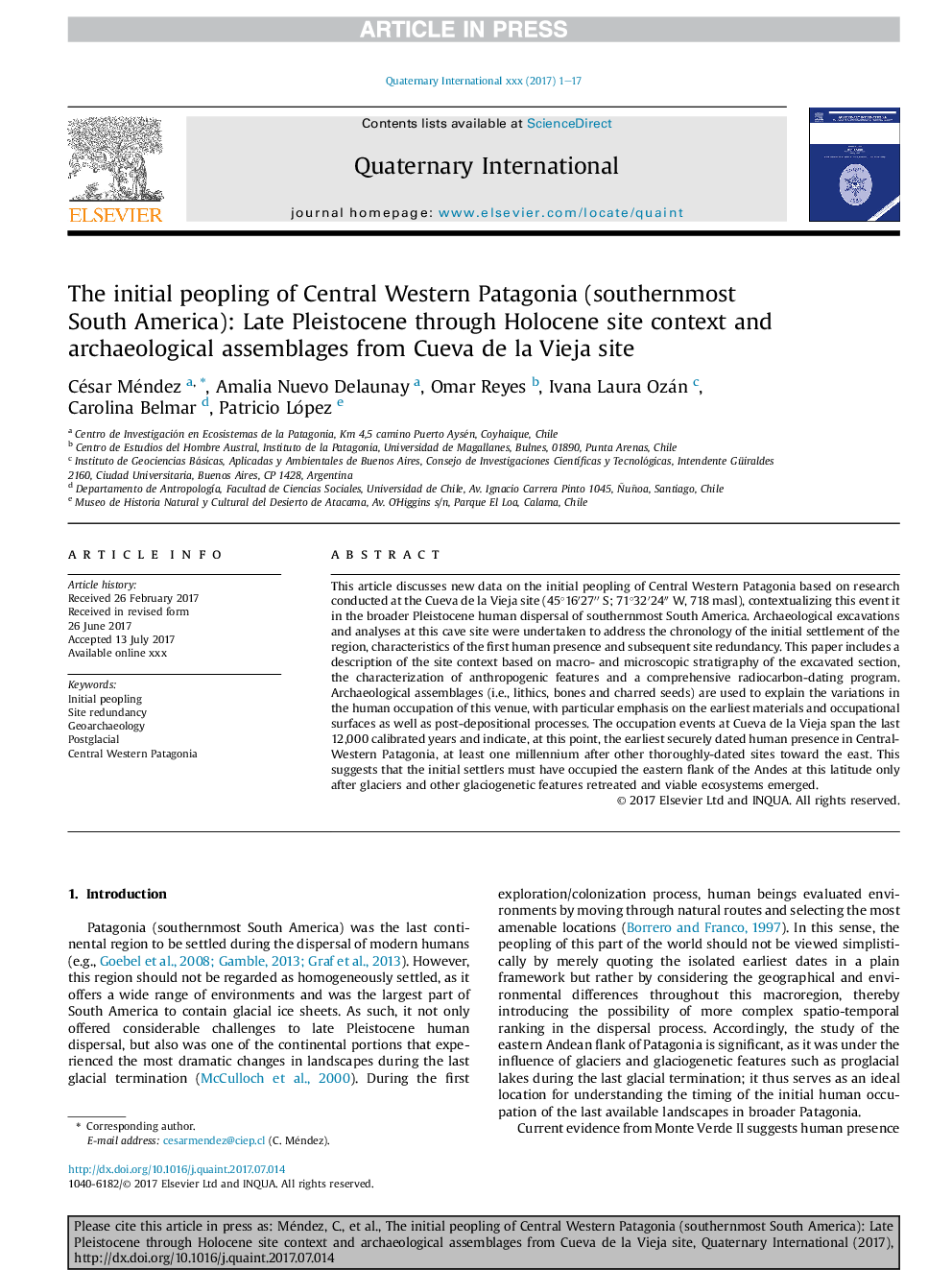| Article ID | Journal | Published Year | Pages | File Type |
|---|---|---|---|---|
| 7449837 | Quaternary International | 2018 | 17 Pages |
Abstract
This article discusses new data on the initial peopling of Central Western Patagonia based on research conducted at the Cueva de la Vieja site (45°16â²27â³ S; 71°32â²24â³ W, 718 masl), contextualizing this event it in the broader Pleistocene human dispersal of southernmost South America. Archaeological excavations and analyses at this cave site were undertaken to address the chronology of the initial settlement of the region, characteristics of the first human presence and subsequent site redundancy. This paper includes a description of the site context based on macro- and microscopic stratigraphy of the excavated section, the characterization of anthropogenic features and a comprehensive radiocarbon-dating program. Archaeological assemblages (i.e., lithics, bones and charred seeds) are used to explain the variations in the human occupation of this venue, with particular emphasis on the earliest materials and occupational surfaces as well as post-depositional processes. The occupation events at Cueva de la Vieja span the last 12,000 calibrated years and indicate, at this point, the earliest securely dated human presence in Central-Western Patagonia, at least one millennium after other thoroughly-dated sites toward the east. This suggests that the initial settlers must have occupied the eastern flank of the Andes at this latitude only after glaciers and other glaciogenetic features retreated and viable ecosystems emerged.
Keywords
Related Topics
Physical Sciences and Engineering
Earth and Planetary Sciences
Geology
Authors
César Méndez, Amalia Nuevo Delaunay, Omar Reyes, Ivana Laura Ozán, Carolina Belmar, Patricio López,
